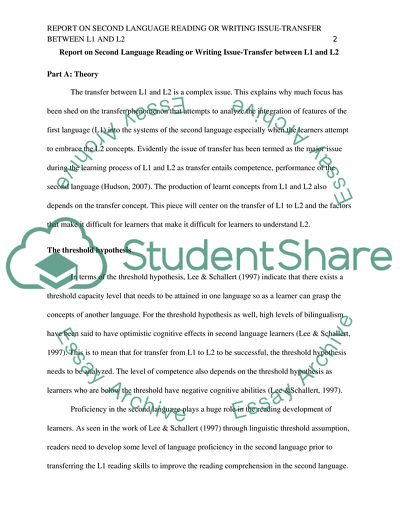Cite this document
(Second Language Reading or Writing Issue-Transfer between L1 and L2 Case Study, n.d.)
Second Language Reading or Writing Issue-Transfer between L1 and L2 Case Study. Retrieved from https://studentshare.org/education/1839373-report-on-second-language-reading-or-writing-issue
Second Language Reading or Writing Issue-Transfer between L1 and L2 Case Study. Retrieved from https://studentshare.org/education/1839373-report-on-second-language-reading-or-writing-issue
(Second Language Reading or Writing Issue-Transfer Between L1 and L2 Case Study)
Second Language Reading or Writing Issue-Transfer Between L1 and L2 Case Study. https://studentshare.org/education/1839373-report-on-second-language-reading-or-writing-issue.
Second Language Reading or Writing Issue-Transfer Between L1 and L2 Case Study. https://studentshare.org/education/1839373-report-on-second-language-reading-or-writing-issue.
“Second Language Reading or Writing Issue-Transfer Between L1 and L2 Case Study”. https://studentshare.org/education/1839373-report-on-second-language-reading-or-writing-issue.


